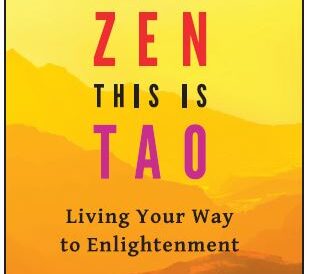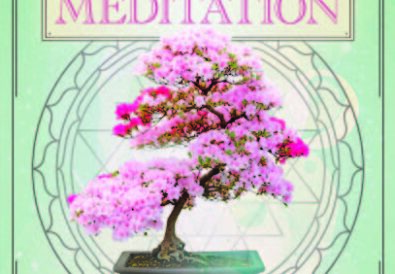Given the pace of radical change in the world today, what we need right now is creativity.
Mindfulness meditation can help increase our awareness of what’s happening in the moment. It helps us develop greater insight and wisdom, and ultimately, achieve an open mind where we can access our witness state — or as I call it, “open mind.” In open mind, we can also tap into the creativity that comes from deep within. This core creativity, where we experience the creative flow, is also where we access intuition and our inner wisdom.
What does it feel like when we shift into our open mind witness state and begin to feel a core creativity download? Australian actor Cody Fern says, “Sometimes I have to pull the car over when I’m driving. It feels like something is being born in me, something big is coming. The creative moment and the future are meeting.” His advice? “Be open. Don’t force or careen the creative flow into a certain direction. This process is about allowing. Trusting. Seizing the creative moment before it moves on. You have to drop everything and just go. It seizes you and it commands you, not the other way around.”
In addition to becoming aware of the present moment through mindfulness as a way to access our core creativity, we can do “open monitoring meditation,” which is a form of mindfulness meditation. With it, we remain focused and mindful. However, instead of sustaining our attention on one thing (our breath or a mantra), we sustain it on our experiences in the present moment while breathing naturally and relaxing into sensations, emotions, memories, and thoughts as they arise. We broaden our focus on all of these experiences.
Use these tips to refine your practice of open monitoring meditation:
- Maintain attention on the present moment and all that’s unfolding. When doing open monitoring meditation, remain attentive to all that’s happening in the moment, even if what’s happening is a thought appearing in your mind. When that happens, simply notice it and acknowledge it as an anxious thought. Refrain from running with that thought as you would if you were on a wild horse that takes off. Simply note the thought and then refocus on the moment. Focusing on your breath — feeling yourself inhale, exhale, and pause before inhaling again — can help you stay off that horse.
- Act as a nonjudgmental witness. Cultivating your witnessing self as a result of open monitoring meditation breaks you out of viewing external reality from a rigid, fixed perspective. Acting only as a witness lets you more creatively observe your thoughts, feelings, and sensations. By removing any judgment, you also witness your usual behavioral patterns, inner nature, and the workings of your mind. It becomes easier to experience a quality of spaciousness and equanimity because your mind is freed of the excess debris it churns up — the worries and distractions that take you out of experiencing the moment. Being more mindfully present lets you see with new eyes and hear with new ears. You’ve observed many sunsets and walked on the same sidewalk many times, but when you’ve cultivated your witnessing self, you more easily pick up on what you never saw before. Cynicism falls away as fresh insights and ideas come to you.
- Sharpen your creative focus. Mindfulness also improves your focus, helping you to become more productive. While the creative process always involves generating some ideas that go nowhere, mindfulness amplifies any that come to you, giving them more color and vividness. That’s because mindfulness allows you to access the resources of your creative unconscious from which core creativity flows. It’s important to respect and trust images and insights that appear during a mindfulness practice or shortly afterward because they’re emerging from the zone of core creativity.
- Put aside insecurity and self-doubt. Open monitoring meditation can help you overcome insecurities about your creative abilities. For example, when a musician is improvising, in the flow of creativity, the areas of the brain associated with self-consciousness aren’t active. Thoughts such as, “Maybe what I’m creating isn’t very good,” don’t form. An open monitoring meditation practice helps you to recognize when you’re feeling insecure and address that feeling consciously by choosing to hold more positive beliefs about yourself and your potential.
Core creativity is powerful for birthing art and innovation. To tap into its flow, work at getting into a state of open mind.
 Ronald A. Alexander, PhD is the author of Core Creativity: The Mindful Way to Unlock Your Creative Self (Rowman & Littlefield, 2022), upon which this article is based. He is a mind-body psychotherapist, an international trainer, and a creativity, business and leadership coach. He has a private psychotherapy and executive coaching practice in Santa Monica, California. He’s the executive director of the OpenMind® Training Program that offers personal and professional training programs in mindfulness-based therapies, transformational leadership and meditation. He is also the author of the highly acclaimed book, Wise Mind, Open Mind: Finding Purpose and Meaning in Times of Crisis, Loss, and Change (2008). Learn more at www.CoreCreativity.com.
Ronald A. Alexander, PhD is the author of Core Creativity: The Mindful Way to Unlock Your Creative Self (Rowman & Littlefield, 2022), upon which this article is based. He is a mind-body psychotherapist, an international trainer, and a creativity, business and leadership coach. He has a private psychotherapy and executive coaching practice in Santa Monica, California. He’s the executive director of the OpenMind® Training Program that offers personal and professional training programs in mindfulness-based therapies, transformational leadership and meditation. He is also the author of the highly acclaimed book, Wise Mind, Open Mind: Finding Purpose and Meaning in Times of Crisis, Loss, and Change (2008). Learn more at www.CoreCreativity.com.





















Thank you! Wow! This is some amazing, interesting stuff. I plan to keep this read close to me and read it over and over again. I feel fortunate to have these tips and put them to practice. Please say in touch.